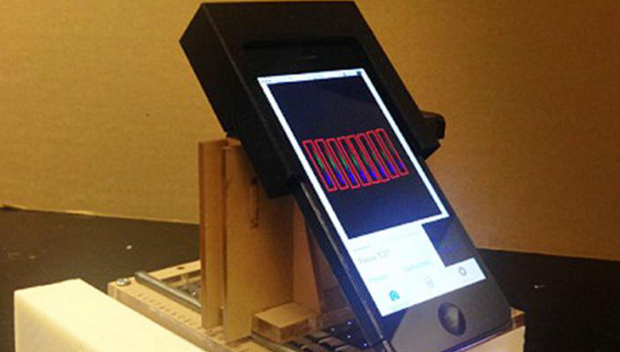Researchers at Washington State University have developed a portable sensor that uses a smartphone’s camera to detect a biological indicator for several types of cancers with 99% accuracy, yielding laboratory quality results.
The sensor, a light spectrometer, can process up to eight blood or tissue samples at the same time (or one sample in eight wells) and can detect the human protein interleukin-6 (IL-6). That protein is a known biological marker for lung, prostate, liver, breast and epithelial cancers.
“At a time when patients and medical professionals expect always faster results, researchers are trying to translate biodetection technologies used in laboratories to the field and clinic, so patients can get nearly instant diagnoses in a physician’s office, an ambulance or the emergency room,” the researchers said in a statement.
A spectrometer analyses the amount and type of chemicals in a sample by measuring the light spectrum. The research was published in the journal Biosensors and Bioelectronics.
While smartphone spectrometers exist today, the WSU researchers said the eight-channel smartphone spectrometer is unique, and inexpensive to produce at about $150.
A custom smartphone multi-view app uses the phone’s built-in camera and was developed to control the optical sensing parameters and to align each sample to the corresponding spectrometer channel. The captured images are converted into a spectrum in the visible wavelength range.
The initial cancer spectrometer was created for an iPhone 5, but it can be adjusted to work with any smartphone, according to Lei Li, an assistant professor in WSU’s School of Mechanical and Materials Engineering. Li, who led the research team, also filed a provisional patent for the work.
“With our eight-channel spectrometer, we can put eight different samples to do the same test, or one sample in eight different wells to do eight different tests. This increases our device’s efficiency,” Li said.
IDG News Service








Subscribers 0
Fans 0
Followers 0
Followers